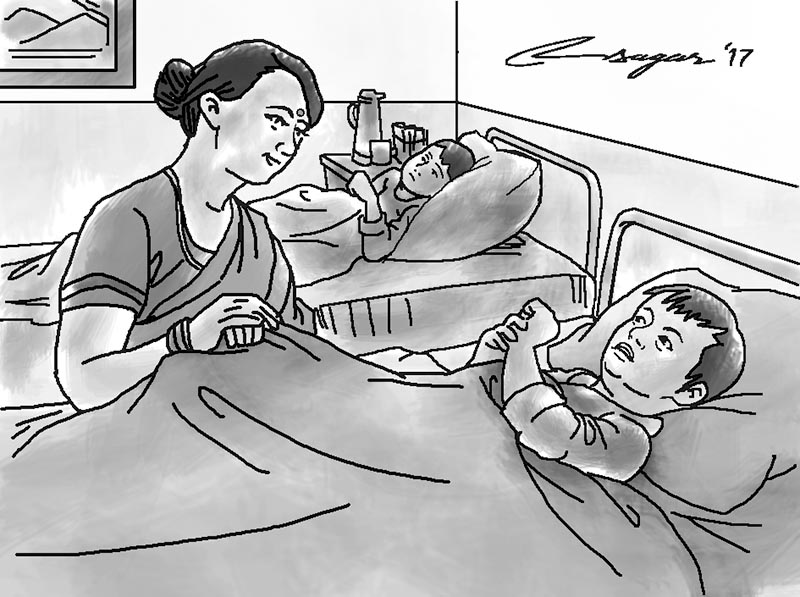Assisted living facility: The big gap
The assisted living facility must have a safe, caring and productive environment so that each individual can attain optimum well-being and overall development in vocation, health etc. In Nepal’s context, a pilot mechanism could be designed to understand how individuals with disabilities can be accommodated
Tenzing is going to celebrate his 19th birthday soon this year but there is a problem. He has overstayed the residential organization for children in Bhaktapur and there seems to be a lack of assisted living facility for adults like Tenzing.
Tenzing was born with a neuro-developmental impairment called cerebral palsy due to which he needs some assistance with his daily living activities such as eating and wearing clothes. When Karuna Foundation Nepal (KFN) identified Tenzing in his village in Kavre, he seemed to be neglected not only by his community but also by his family. Several reasons such as lack of positive awareness towards people with disabilities, lack of referrals to medical and rehabilitation services, poor socio-economic status, and remote geographic location of his community and family indicated his overall condition.
This led KFN in assisting Tenzing with transitioning into Suvadra Foundation Nepal, in Bhaktapur, a safer environment where he could live with his peers to attain his optimum level of functioning and well being. Thus, in accordance with Article 9 (1) of the Convention on the Rights of the Child (CRC), Tenzing’s transition was deemed necessary.
Now that he is an adult, Tenzing is expected to make space for children who are in a similar situation as he was when he first came in to Suvadra. Back at home, his stepfather continues to have alcohol abuse issues and his mother has multiple disabilities; intellectual impairment and deafness. Such challenges act as barriers to good intentions of providing comprehensive rehabilitation and integration of Tenzing back with his family.
Although Nepal is bound by the CRC and Convention on the Rights of Persons with Disabilities (CRPD) the fact that adults with neuro-developmental disabilities have no favourable sheltered environment to integrate to, is a national human rights and protection violation.
Only one out of the 38 individuals and organizations that I contacted as a part of this article’s research accommodated adults with disabilities. While the national prevalence of neuro-developmental disabilities, such as cerebral palsy and autism spectrum disorder (ASD) specifically, is unknown, the National Population and Housing Census in 2011 stipulated that 513,321 people had some kind of disability in Nepal. The number is estimated to have risen.
An assisted living facility for people with disabilities whether privately run or by non-profits must be critically planned, designed and must have a financial and human resource sustainability model to last in the long run. Human resources must have the capacity to deal with the wide spectrum of specific needs of each individual with a good resident to staff ratio for quality control purposes. Appropriate and reasonable accommodations to theinfrastructure for safe mobility and functioning purposes is crucial. Allocation of suitable rooms and roommates cannot be ignored either. Imagine allocating a person with intellectual impairment on the third floor with low railings on the balcony and stairs.
The assisted living facility must have a safe, caring and productive environment so that each individual can attain optimum well-being and overall development in vocation, health etc. In Nepal’s context, a pilot mechanism could be designed to understand how individuals with disabilities can be accommodated enabling them to lead lives of dignity and be productive members of society.
The government has the ultimate responsibility to provide license and enforce safety, hygiene and protection regulatory standards in technical collaboration with the experts; parents of children with disabilities, advocates and lobbyists of the disability sector, engineers, specialist medical and rehabilitation practitioners, and those who run day care centres and rehabilitation homes.
Article 19 of the CRPD ‘Living independently and being included in the community’ obligates Nepal to ensure that people with disabilities are included in the community and therefore are not abandoned or isolated. The uncertainty faced by most parents who have children with neuro-developmental disability, those who cannot differentiate between the right and wrong or cannot comprehend sexual harassment, abandonment, love affair or the labour market likely lies in the fact that their child may experience discrimination. To clarify, discrimination is the “exclusion or restriction on the basis of disability which has the purpose or effect of impairing or nullifying the recognition, enjoyment or exercise, on an equal basis with others” under Article 2 of the CRPD.
Advocating for a well-regulated licensed assisted living residential facility is by no means to encourage families to get rid of caring for their child with disability. For this reason, founding members must design a strong guideline for admission into the assisted living facility. The guideline must also bind founders, government and board members to provide permanent or temporary assistance.
Samridhi works as a Senior Program Officer-CBR with Karuna Foundation Nepal






